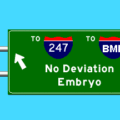
The University of Toronto has announced what it says is a breakthrough development in video camera design. Based on an entirely new distance-mapping principle, the omni-focus lensing system delivers automatic real-time focus of both near and far field images, simultaneously, in high resolution.
“The intensity of a point source decays with the inverse square of the distance of propagation. This variation with distance has proven to be large enough to provide depth mapping with high resolution. What’s more, by using two point sources at different locations, the distance of the object can be determined without the influence of its surface texture,” explained Professor Keigo Iizuka, the inventor of the camera.
This principle led Iizuka to invent a novel distance-mapping camera, the Divergence-ratio Axi-vision Camera, abbreviated “Divcam,” which is a key component of the new Omni-focus Video Camera.
The Omni-focus Video Camera contains an array of color video cameras, each focused at a different distance, and an integrated Divcam. The Divcam maps distance information for every pixel in the scene in real time. A software-based pixel correspondence utility, using prior intellectual property invented by co-investigator Dr. David Wilkes, then uses the distance information to select individual pixels from the ensemble of outputs of the color video cameras, and generates the final “omni-focused” single-video image.
The system is still in the research phase but the researchers say it will have application in all types of video cameras. “I’d like to apply the principle of the Omni-focus Video Camera to the design of a laparoscope. It would help doctors at the operating table, if they can see the entire view without touching optics of the laparoscope, especially if dealing with a large lesion,” said Iizuka.
Related:
Multiplexing technique promises quantum leap in camera performance
Single Pixel Camera Snaps High-Res Images








Comments are closed.